Mineral Composition and Photochemical Reactivity of Suspended Particulate Matters in the Euphotic Zones of China’s Nearshore and Estuarine Regions
Abstract
:1. Introduction
2. Materials and Methods
2.1. Sampling
2.2. Mineralogical Characterization of SPM
2.3. Photoelectrochemical Characterization of SPM
2.4. DNA Extraction and Sequencing
3. Results
3.1. Spatial Distribution of SPM
3.2. Element Composition of SPM
3.3. Mineral Characterization of SPM
3.4. Photoelectrochemical Characterization of SPM
3.5. Microbial Community Composition of Euphotic Zone
3.6. Influence of Environmental Variables on Microbial Community Diversity
4. Discussion
5. Conclusions
Supplementary Materials
Author Contributions
Funding
Institutional Review Board Statement
Informed Consent Statement
Data Availability Statement
Conflicts of Interest
References
- Ryther, J.H. Photosynthesis in the Ocean as a Function of Light Intensity. Limnol. Oceanogr. 1956, 1, 61–70. [Google Scholar] [CrossRef]
- Sverdrup, H.U. On Conditions for the Vernal Blooming of Phytoplankton. J. Cons. Int. Explor. Mer. 1953, 18, 287–295. [Google Scholar] [CrossRef]
- Marra, J.F.; Lance, V.P.; Vaillancourt, R.D.; Hargreaves, B.R. Resolving the Ocean’s Euphotic Zone. Deep Sea Res. Part Oceanogr. Res. Pap. 2014, 83, 45–50. [Google Scholar] [CrossRef]
- Bianchi, C.N. Biodiversity Issues for the Forthcoming Tropical Mediterranean Sea. Hydrobiologia 2007, 580, 7–21. [Google Scholar] [CrossRef]
- Leppard, G.G.; Flannigan, D.T.; Mavrocordatos, D.; Marvin, C.H.; Bryant, D.W.; McCarry, B.E. Binding of Polycyclic Aromatic Hydrocarbons by Size Classes of Particulate in Hamilton Harbor Water. Environ. Sci. Technol. 1998, 32, 3633–3639. [Google Scholar] [CrossRef]
- Turner, A.; Millward, G.E. Suspended Particles: Their Role in Estuarine Biogeochemical Cycles. Estuar. Coast. Shelf Sci. 2002, 55, 857–883. [Google Scholar] [CrossRef]
- Uher, G.; Hughes, C.; Henry, G.; Upstill-Goddard, R.C. Non-Conservative Mixing Behavior of Colored Dissolved Organic Matter in a Humic-Rich, Turbid Estuary. Geophys. Res. Lett. 2001, 28, 3309–3312. [Google Scholar] [CrossRef]
- Sun, X.; Yang, Z.; Fan, D.; Li, Y. Crystals of Suspended Marine Barite in the Eastern Equatorial Pacific: Processes of Dissolution and Effects on Crystal Morphology. Chin. J. Oceanol. Limnol. 2015, 33, 194–203. [Google Scholar] [CrossRef]
- Mao, C.; Chen, J.; Yuan, X.; Yang, Z.; Balsam, W.; Ji, J. Seasonal Variation in the Mineralogy of the Suspended Particulate Matter of the Lower Changjiang River at Nanjing, China. Clays Clay Miner. 2010, 58, 691–706. [Google Scholar] [CrossRef]
- Xu, Y.; Schoonen, M.A.A. The Absolute Energy Positions of Conduction and Valence Bands of Selected Semiconducting Minerals. Am. Mineral. 2000, 85, 543–556. [Google Scholar] [CrossRef]
- Munyaka, P.M.; Eissa, N.; Bernstein, C.N.; Khafipour, E.; Ghia, J.-E. Antepartum Antibiotic Treatment Increases Offspring Susceptibility to Experimental Colitis: A Role of the Gut Microbiota. PLoS ONE 2015, 10, e0142536. [Google Scholar] [CrossRef]
- Edgar, R.C. UPARSE: Highly Accurate OTU Sequences from Microbial Amplicon Reads. Nat. Methods 2013, 10, 996–998. [Google Scholar] [CrossRef] [PubMed]
- Wang, Y.; Sheng, H.-F.; He, Y.; Wu, J.-Y.; Jiang, Y.-X.; Tam, N.F.-Y.; Zhou, H.-W. Comparison of the Levels of Bacterial Diversity in Freshwater, Intertidal Wetland, and Marine Sediments by Using Millions of Illumina Tags. Appl. Environ. Microbiol. 2012, 78, 8264–8271. [Google Scholar] [CrossRef] [PubMed] [Green Version]
- de Faria, D.L.A.; Venâncio Silva, S.; de Oliveira, M.T. Raman Microspectroscopy of Some Iron Oxides and Oxyhydroxides. J. Raman Spectrosc. 1997, 28, 873–878. [Google Scholar] [CrossRef]
- Ohsaka, T.; Izumi, F.; Fujiki, Y. Raman Spectrum of Anatase, TiO2. J. Raman Spectrosc. 1978, 7, 321–324. [Google Scholar] [CrossRef]
- Samara, G.A.; Peercy, P.S. Pressure and Temperature Dependence of the Static Dielectric Constants and Raman Spectra of TiO2 (Rutile). Phys. Rev. B 1973, 7, 1131–1148. [Google Scholar] [CrossRef]
- Tompsett, G.A.; Bowmaker, G.A.; Cooney, R.P.; Metson, J.B.; Rodgers, K.A.; Seakins, J.M. The Raman Spectrum of Brookite, TiO2 (Pbca, Z = 8). J. Raman Spectrosc. 1995, 26, 57–62. [Google Scholar] [CrossRef]
- Sun, M.; Ren, G.; Li, Y.; Lu, A.; Ding, H. Extracellular Electron Transfer Between Birnessite and Electrochemically Active Bacteria Community from Red Soil in Hainan, China. Geomicrobiol. J. 2019, 36, 169–178. [Google Scholar] [CrossRef]
- Ren, G.; Yan, Y.; Nie, Y.; Lu, A.; Wu, X.; Li, Y.; Wang, C.; Ding, H. Natural Extracellular Electron Transfer between Semiconducting Minerals and Electroactive Bacterial Communities Occurred on the Rock Varnish. Front. Microbiol. 2019, 10, 293. [Google Scholar] [CrossRef]
- Ren, G.; Yan, Y.; Sun, M.; Wang, X.; Wu, X.; Li, Y.; Lu, A.; Ding, H. Considerable Bacterial Community Structure Coupling with Extracellular Electron Transfer at Karst Area Stone in Yunnan, China. Geomicrobiol. J. 2018, 35, 424–431. [Google Scholar] [CrossRef]
- Lu, A.; Li, Y.; Ding, H.; Xu, X.; Li, Y.; Ren, G.; Liang, J.; Liu, Y.; Hong, H.; Chen, N.; et al. Photoelectric Conversion on Earth’s Surface via Widespread Fe- and Mn-Mineral Coatings. Proc. Natl. Acad. Sci. USA 2019, 116, 9741–9746. [Google Scholar] [CrossRef] [Green Version]
- Lu, A.; Li, Y.; Jin, S.; Wang, X.; Wu, X.-L.; Zeng, C.; Li, Y.; Ding, H.; Hao, R.; Lv, M.; et al. Growth of Non-Phototrophic Microorganisms Using Solar Energy through Mineral Photocatalysis. Nat. Commun. 2012, 3, 768. [Google Scholar] [CrossRef] [PubMed] [Green Version]
- Sakimoto, K.K.; Zhang, S.J.; Yang, P. Cysteine–Cystine Photoregeneration for Oxygenic Photosynthesis of Acetic Acid from CO2 by a Tandem Inorganic–Biological Hybrid System. Nano Lett. 2016, 16, 5883–5887. [Google Scholar] [CrossRef] [PubMed]
- Zhang, H.; Li, Y.; Wang, X.; Lu, A.; Ding, H.; Zeng, C.; Wang, X.; Wu, X.; Nie, Y.; Wang, C. Aerobic and Anaerobic Reduction of Birnessite by a Novel Dietzia Strain. Geochem. Trans. 2015, 16, 11. [Google Scholar] [CrossRef] [PubMed] [Green Version]
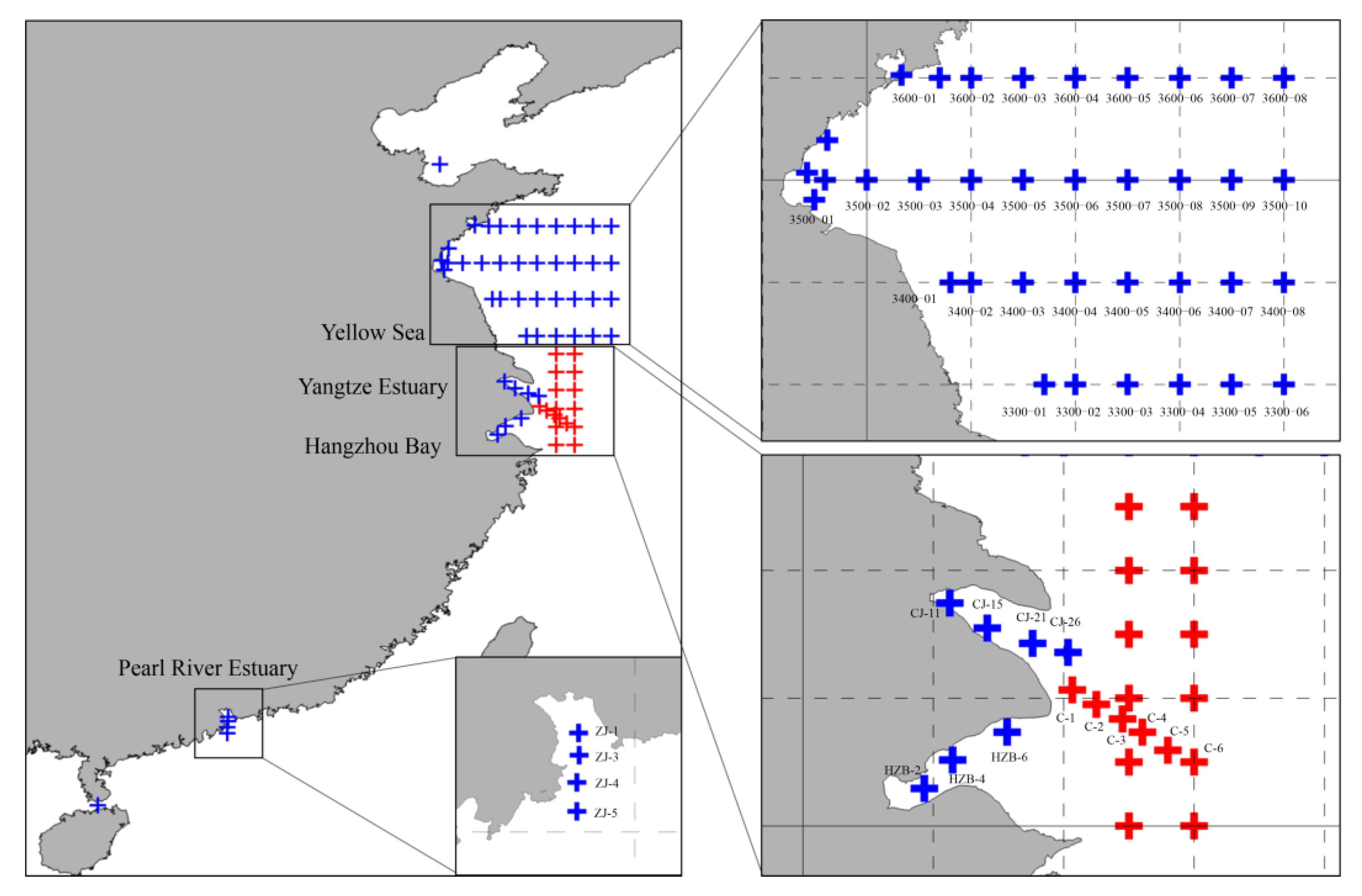


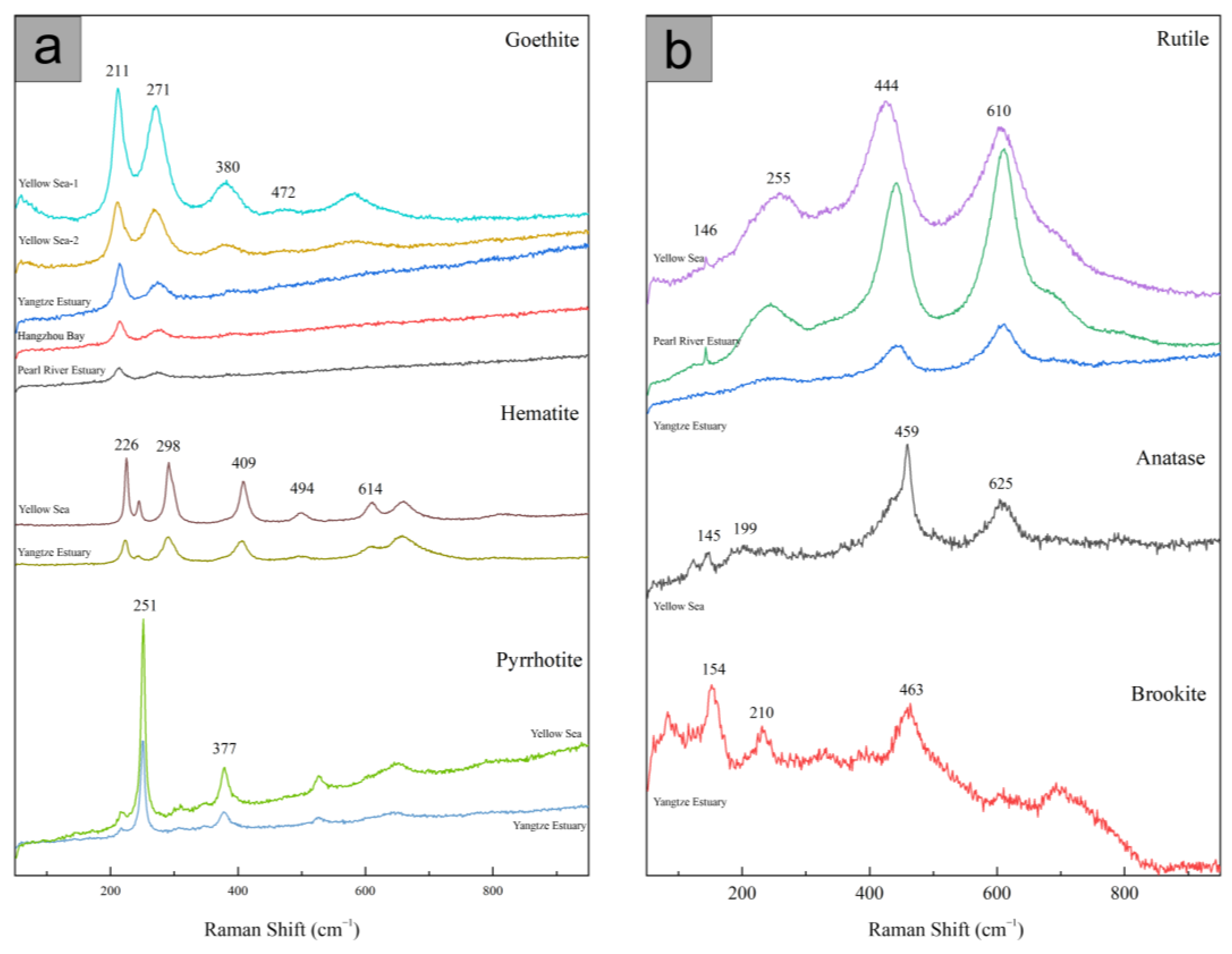
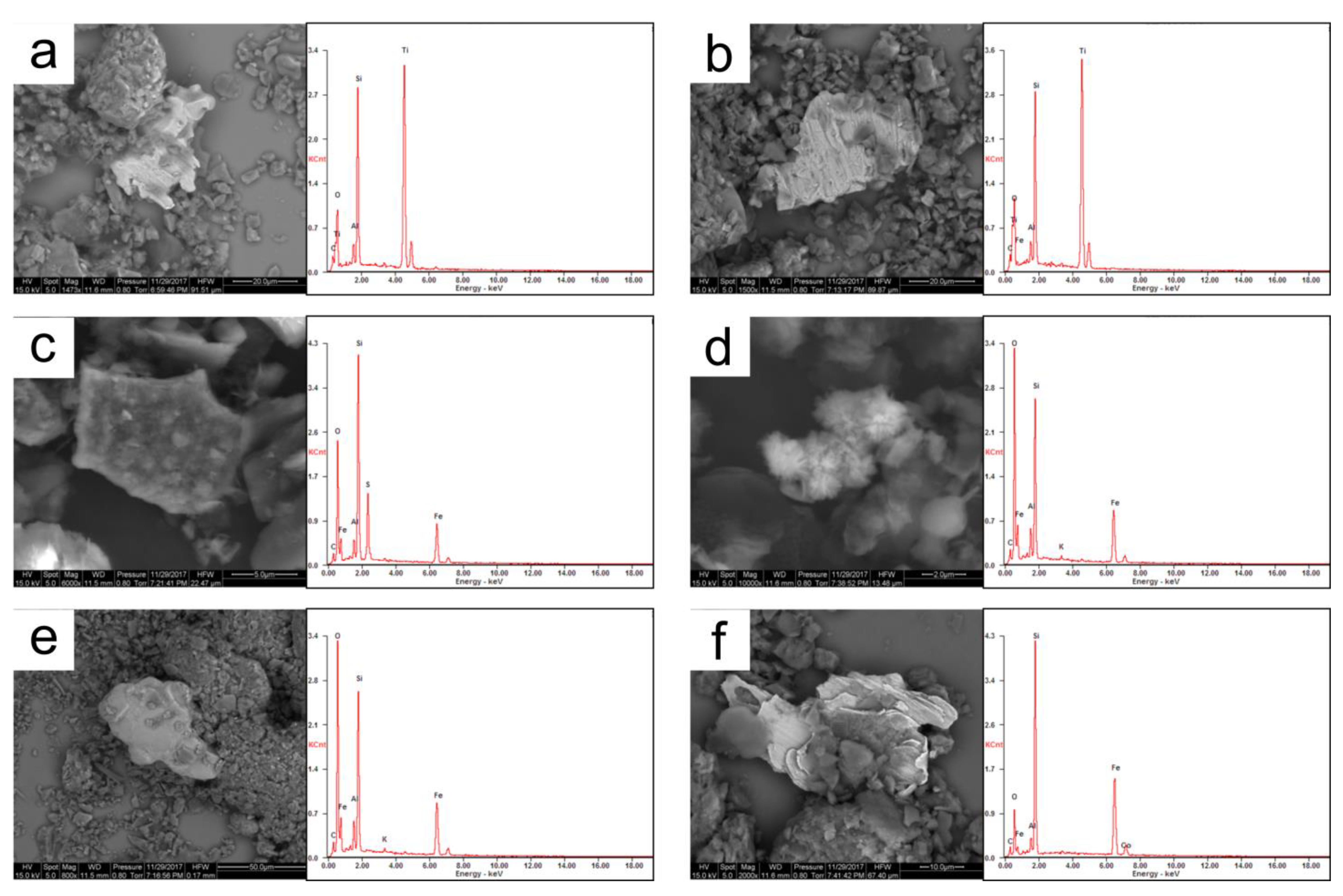


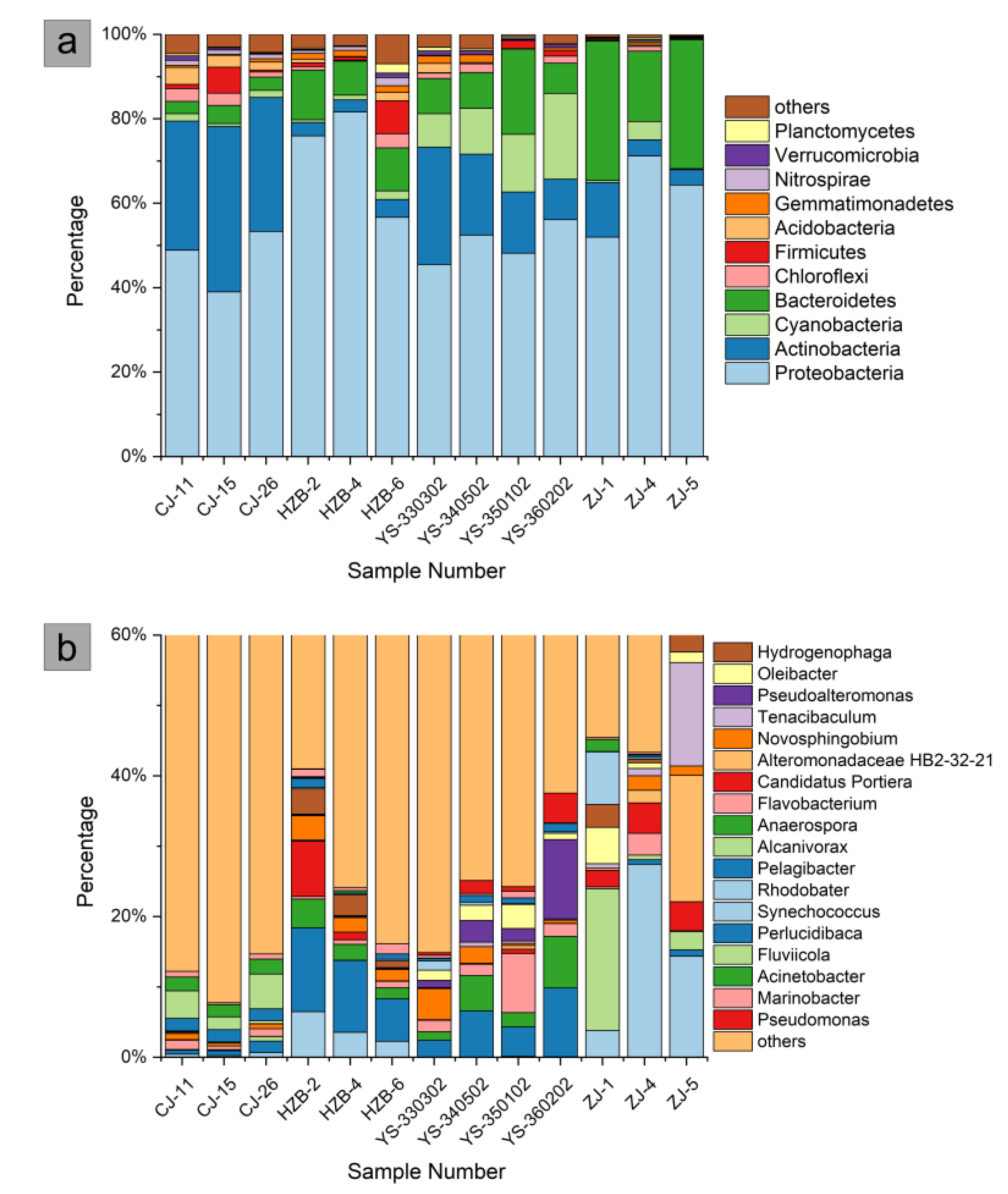
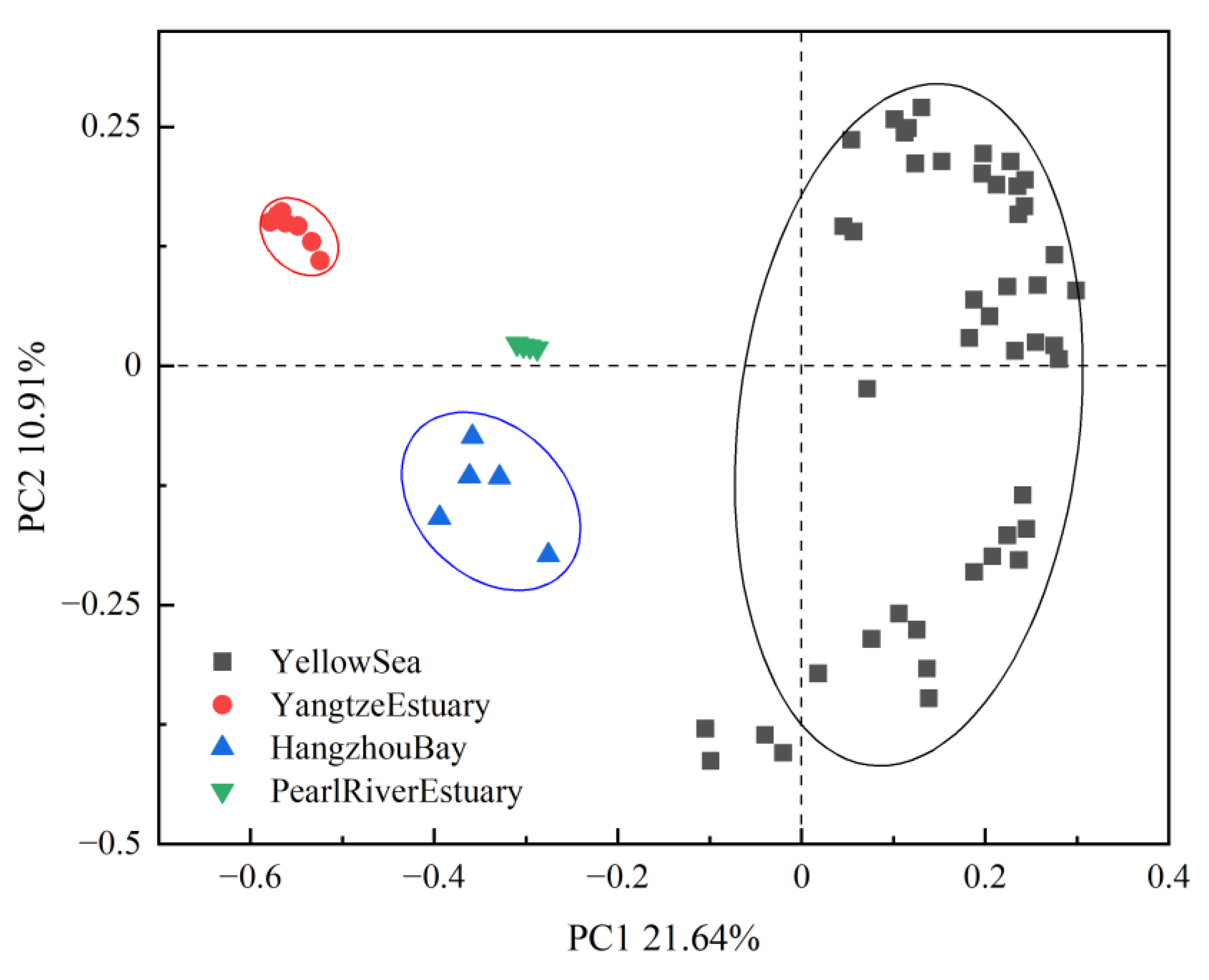
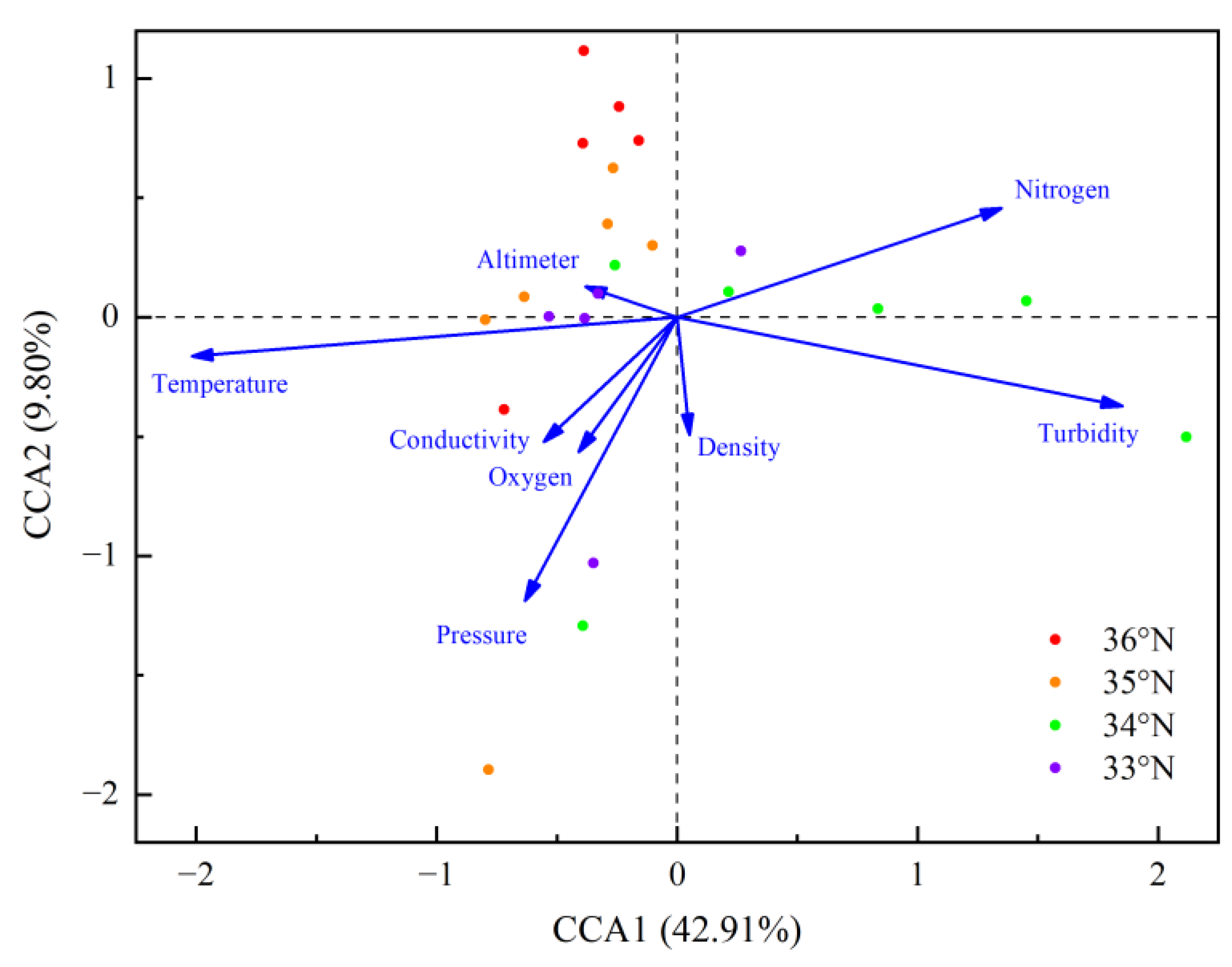
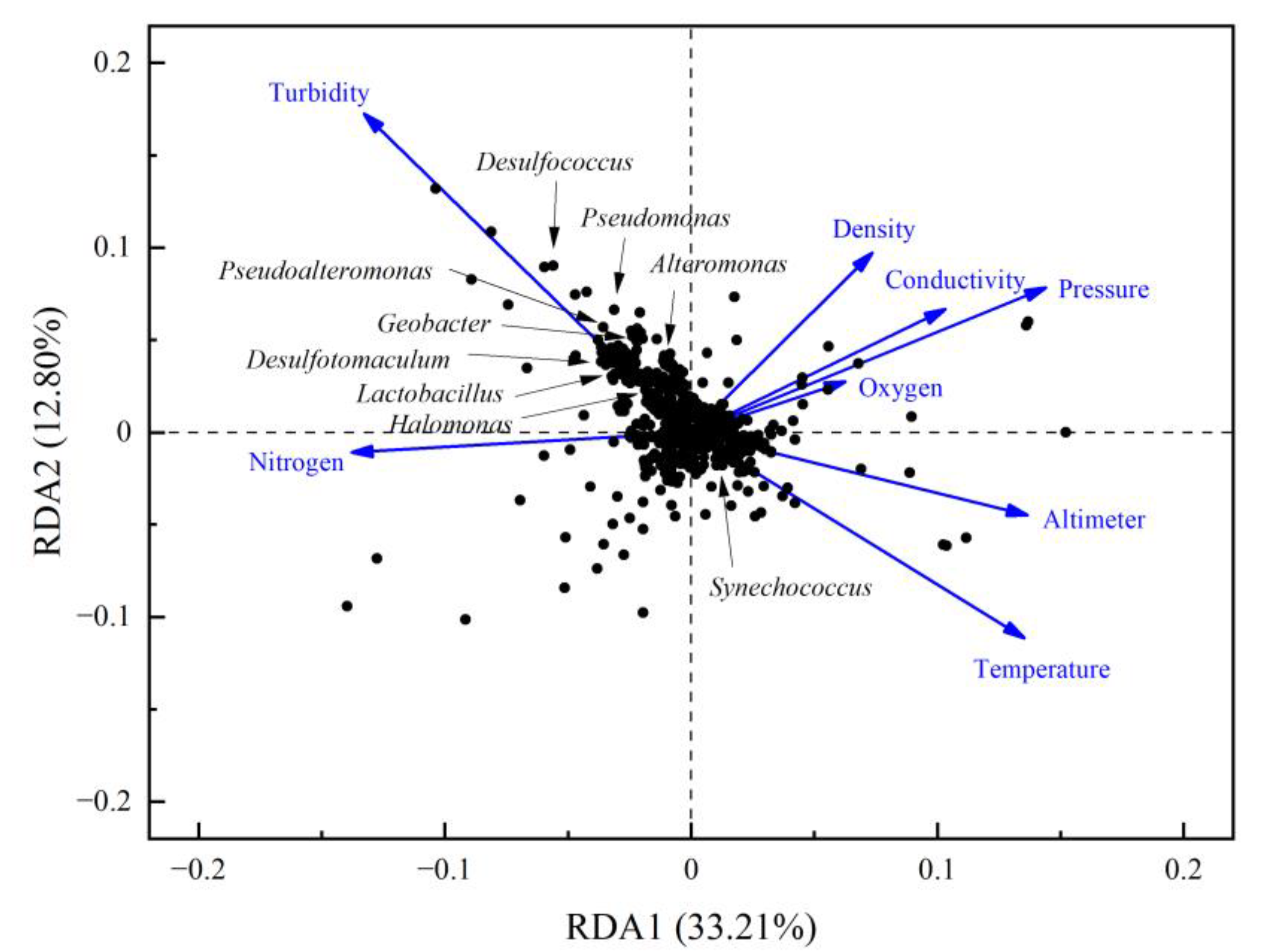
Disclaimer/Publisher’s Note: The statements, opinions and data contained in all publications are solely those of the individual author(s) and contributor(s) and not of MDPI and/or the editor(s). MDPI and/or the editor(s) disclaim responsibility for any injury to people or property resulting from any ideas, methods, instructions or products referred to in the content. |
© 2023 by the authors. Licensee MDPI, Basel, Switzerland. This article is an open access article distributed under the terms and conditions of the Creative Commons Attribution (CC BY) license (https://creativecommons.org/licenses/by/4.0/).
Share and Cite
Sun, Y.; Ren, G.; Liu, Y.; Liu, J.; Li, Y.; Lu, A.; Ding, H. Mineral Composition and Photochemical Reactivity of Suspended Particulate Matters in the Euphotic Zones of China’s Nearshore and Estuarine Regions. Minerals 2023, 13, 552. https://doi.org/10.3390/min13040552
Sun Y, Ren G, Liu Y, Liu J, Li Y, Lu A, Ding H. Mineral Composition and Photochemical Reactivity of Suspended Particulate Matters in the Euphotic Zones of China’s Nearshore and Estuarine Regions. Minerals. 2023; 13(4):552. https://doi.org/10.3390/min13040552
Chicago/Turabian StyleSun, Yuan, Guiping Ren, Yuwei Liu, Jia Liu, Yan Li, Anhuai Lu, and Hongrui Ding. 2023. "Mineral Composition and Photochemical Reactivity of Suspended Particulate Matters in the Euphotic Zones of China’s Nearshore and Estuarine Regions" Minerals 13, no. 4: 552. https://doi.org/10.3390/min13040552




